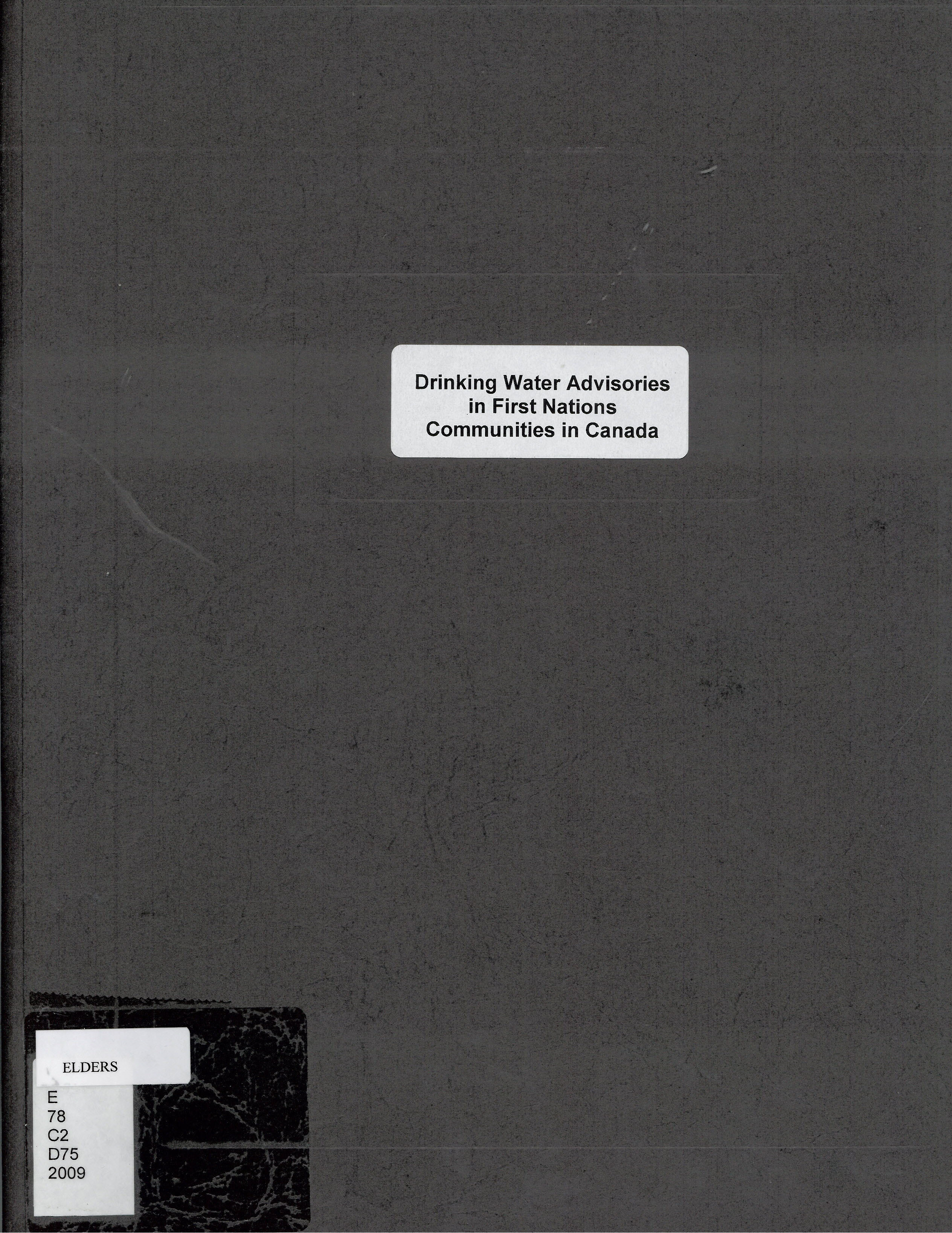
Book
|
Drinking water advisories in First Nations communities in Canada : a national overview, 1995-2007.
-- Drinking water advisories in First Nations [Aboriginal, Indigenous, or, Native peoples, Indians] communities in Canada.
Copies
2 Total copies, 2 Copies are in,
0 Copies are out.
Title
Drinking water advisories in First Nations communities in Canada : a national overview, 1995-2007. -- Drinking water advisories in First Nations [Aboriginal, Indigenous, or, Native peoples, Indians] communities in Canada.
Call No
E 78 C2 D75 2009 C.2
Authors
Subjects
Language
English
Published
[Ottawa : Health Canada], c2009.
Publication Desc
24 p. : ill. ; 28 cm.
ISBN
9781100126708
Dimensions
28 cm.









